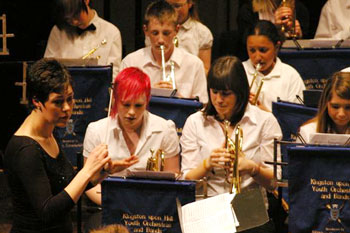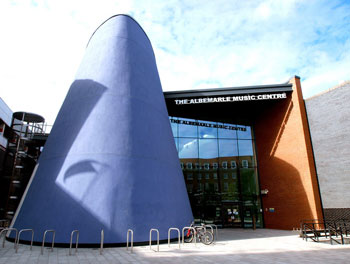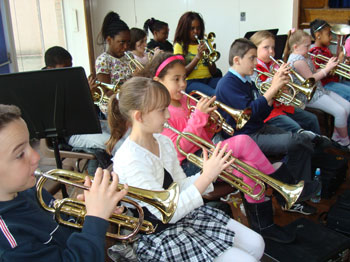


(In association with the Music Education Council,
the PRS Foundation and Jazz Services)
Major Trophy |
||||||||||||||||
|
(this year shared, as follows) The Kingston upon Hull budget was used to teach 4,500 pupils and students in their schools (well above the national average); to provide a wide range of ensembles in several genres and for 700 young people (all abilities) to attend the Albemarle Music Centre each week, to run the Centre and to facilitate Wider Opportunities projects. In addition to sharing staff with neighbouring authorities the Music Service maintained productive collaborations with many local arts and community organisations and through the region’s Youth Music Action Zone delivered successful, varied music programmes targeted at young people not accessing music. Staff were employed on school teachers’ terms and conditions.
This is one of the most deprived districts in England. Music is one of the chosen anti-dotes. Thus we come to the main reason for our recognition of Kingston upon Hull. It is a sad fact that some music services seem to have to operate in something of a vacuum to the extent that the host authority neither celebrates its achievements nor acknowledges its existence. One has only to look at a random selection of web sites for the evidence. With the occasional notable exception, our awards recognise an-authority-wide commitment to music education. Repeated moves to detach schools from their parent LEAs don’t help. But most of the submissions we consider testify to the value of the Authority’s support, financial or otherwise and none more so than this one.
2008 saw the purpose-built £3.2m new Music Centre fully operational in the city centre. Accommodation consists of a main auditorium with raised, electrically operated seating for 196 people, a large rehearsal room which can accommodate a 50-strong ensemble, five further classrooms, a Gamelan room, a large percussion studio, a library, a bespoke storage system, including for instruments and office accommodation for the Music Service. And on top of that the City Council grant-aided the Service to the tune of £475,000. Hard to believe, isn’t it? Most of Manchester’s standards fund was devolved to schools. In the year, 98 per cent purchased their vocal and instrumental tuition from the Music Service. So as a result of the Service delivering tuition in virtually every school, staff were available to introduce Wider Opportunities programmes in 94 per cent of primary schools, to release some of their small group tuition time for whole or half-class weekly sessions and to extend the experience to brass, full string ensembles, full recorder consorts and a variety of world percussion combinations. We noted that the new North West Music Partnership between the Halle Orchestra, Manchester, Bolton, Stockport & Salford embraced a wide range of activities and that a major focus on the development of music technology provision in high schools and colleges had produced many positive outcomes. And the expansion to twelve music centres across the City of the free out-of-school hours programme had, among other things, lead to an increase in the number of rock bands in schools.
We warmed to the reported success of the Polkadots classes held at each music centre and starting with a nursery stage to develop music skills through songs and games before children take on the technical challenge of an instrument. We applauded Manchester’s Singing School programme in 2004 and welcome the subsequent developments. The Music Service supported curriculum delivery through regular contact with the schools involving discussion of music tuition models and identification of support needs. That process was underpinned by a training package “Music in the Classroom” which comprised a year long programme of support as well as other training events. And as part of the provision for SEN pupils, an inclusive and accessible Wider Opportunities project was designed for nine special schools with options to work in partnership with local mainstream schools. And we congratulate the Service on the progress made in increasing the percentage of the schools’ population from the black and ethnic minority groups learning a musical instrument (29 per cent) closer to the schools population taken up by those groups, ie 32 per cent. The Service’s exemplary commitment to providing for all genres was largely responsible for that. |



